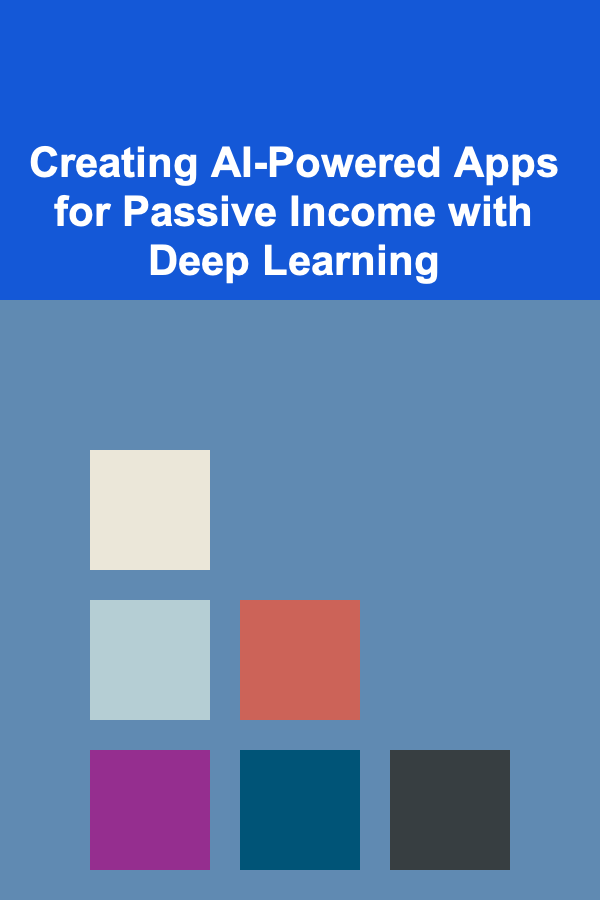
How to Teach Blockchain Technology
ebook include PDF & Audio bundle (Micro Guide)
$12.99$5.99
Limited Time Offer! Order within the next:

Blockchain technology, once a niche subject tied to cryptocurrencies, has evolved into a transformative force with the potential to revolutionize industries across the globe. As an emerging technology, understanding blockchain is no longer a luxury but a necessity for many professionals, including those in finance, healthcare, supply chain management, and even governance. As educators and trainers in this rapidly advancing field, teaching blockchain technology effectively is of paramount importance.
Teaching blockchain requires more than just delivering theoretical knowledge; it involves making complex concepts accessible and relatable to a variety of audiences, from beginners to advanced learners. This article aims to provide a comprehensive approach to teaching blockchain technology, offering strategies for educators to navigate the complexities of this topic and create an engaging, informative, and practical learning experience.
Understanding Blockchain Technology
Before diving into the methods and strategies for teaching blockchain, it is crucial to understand what blockchain is and why it has gained such prominence. A blockchain is a decentralized, distributed ledger that records transactions across many computers in a secure, transparent, and immutable way. Each "block" in the chain contains a list of transactions, and once a block is added to the chain, it cannot be altered, providing transparency and trust.
Blockchain's primary feature is decentralization, meaning there is no central authority or intermediary managing the system. This makes blockchain highly resistant to fraud and manipulation, and it ensures data integrity.
Key Components of Blockchain:
- Blocks: Each block contains a list of transactions, a timestamp, and a reference to the previous block in the chain.
- Decentralization: Unlike traditional centralized databases, blockchain uses a peer-to-peer network, where every participant (node) has access to the entire ledger.
- Cryptography: Blockchain relies on cryptographic techniques like hashing and public-key infrastructure (PKI) to secure data.
- Consensus Mechanisms: These are protocols that ensure all nodes in the network agree on the validity of transactions. Common consensus mechanisms include Proof of Work (PoW), Proof of Stake (PoS), and more.
- Smart Contracts: These are self-executing contracts where the terms of the agreement are written directly into lines of code.
Applications of Blockchain:
- Cryptocurrencies: The most well-known application of blockchain is in digital currencies like Bitcoin and Ethereum.
- Supply Chain Management: Blockchain is used to track the movement of goods across supply chains, ensuring transparency and authenticity.
- Healthcare: It is used to secure patient data and ensure that it is only accessed by authorized parties.
- Voting Systems: Blockchain provides a way to create secure, tamper-proof voting systems, enhancing trust in democratic processes.
- Digital Identity: Blockchain technology allows for the creation of secure and verifiable digital identities.
Why Blockchain Education is Important
With blockchain becoming increasingly influential in various sectors, there is a growing demand for professionals who understand its mechanics and potential applications. By teaching blockchain technology, educators can equip students and professionals with the skills necessary to thrive in an evolving digital landscape.
The demand for blockchain expertise is high, yet the knowledge gap remains significant. Many institutions offer courses in blockchain, but the quality and depth of these courses vary greatly. As an educator, the goal is not only to teach the technical aspects but also to explain how blockchain can be applied in real-world scenarios. Understanding blockchain from a technical standpoint is important, but being able to apply it practically is what sets apart professionals in the field.
Structuring Blockchain Education
Teaching blockchain can be challenging due to its technical nature and rapid evolution. The following steps outline an effective strategy to teach blockchain technology, broken down into stages to accommodate learners at different levels of understanding.
1. Establish a Strong Foundation in Basic Concepts
Before diving into blockchain, it is essential to lay the groundwork by teaching fundamental concepts in computer science and cryptography. Understanding how computers communicate, the basics of databases, and the principles of cryptography will make blockchain much easier to grasp.
Key Concepts to Cover:
- Data Structures: Teach learners about how data is stored and organized. Understanding structures like arrays, linked lists, trees, and hash tables will help learners understand how data is stored in blockchain systems.
- Distributed Systems: A core feature of blockchain is its decentralized nature. Educators should cover topics like peer-to-peer networks, consensus algorithms, and fault tolerance.
- Cryptography: Blockchains rely heavily on cryptographic principles such as hashing, digital signatures, and public-key infrastructure. These concepts are essential for ensuring the security and immutability of the blockchain.
By covering these topics first, students will have a deeper understanding of the underlying principles before delving into the specific mechanics of blockchain technology.
2. Start with Blockchain Basics
Once students understand the foundational concepts, the next step is to introduce them to blockchain-specific terminology and concepts.
Suggested Topics:
- What is Blockchain? Provide a simple, yet thorough, definition of blockchain and its core components (blocks, chains, transactions, and nodes).
- Decentralization vs. Centralization: Explain the difference between centralized systems and decentralized systems, emphasizing the advantages of decentralization, such as security, transparency, and trust.
- How Blockchain Works: Walk students through the process of creating a block, adding it to the chain, and how this ensures security and immutability. Use real-world analogies to simplify these complex concepts.
- Mining and Consensus Mechanisms: Introduce the concept of mining (in the context of Proof of Work) and other consensus mechanisms such as Proof of Stake, explaining how they help secure the blockchain.
- Smart Contracts: Explain the concept of smart contracts, their purpose, and how they can automate processes without the need for intermediaries.
3. Engage with Real-World Use Cases
One of the most effective ways to teach blockchain is by showing students how it is being used in real-world applications. Students often struggle to see the value of blockchain beyond cryptocurrencies, so presenting them with diverse use cases will help them appreciate the broader potential of the technology.
Examples of Real-World Use Cases:
- Cryptocurrency: Explain how Bitcoin and Ethereum work, their underlying technology, and why they are revolutionary.
- Supply Chain Management: Show how blockchain can be used to track products from production to delivery, ensuring authenticity and reducing fraud.
- Healthcare: Discuss how blockchain can ensure the privacy and security of patient data, while also enabling better information sharing among healthcare providers.
- Voting Systems: Explain how blockchain can be used to create secure and transparent voting systems, reducing the risk of fraud and ensuring fair elections.
4. Hands-On Learning and Practical Projects
Blockchain is a hands-on technology, and the best way to learn it is through practice. Assigning students practical projects and exercises will allow them to apply theoretical knowledge in a tangible way.
Practical Exercises:
- Build a Simple Blockchain: Have students create their own basic blockchain using a programming language like Python. This will help them understand how blockchain works on a fundamental level.
- Deploy a Smart Contract: Guide students through the process of creating and deploying a simple smart contract on a test network using Ethereum and tools like Remix or Truffle.
- Simulate Consensus Mechanisms: Help students simulate different consensus mechanisms, like Proof of Work and Proof of Stake, to understand how they secure the blockchain.
- Blockchain Applications: Encourage students to come up with their own blockchain applications for a given industry or problem. This will foster creativity and help them understand how blockchain can be applied in diverse fields.
5. Stay Updated with the Latest Trends and Developments
Blockchain technology is rapidly evolving, with new consensus mechanisms, protocols, and applications emerging regularly. Educators should stay informed about the latest developments and incorporate these updates into their teaching materials.
Key Sources for Staying Updated:
- Research Papers: Encourage students to read cutting-edge research papers and publications related to blockchain technology.
- Industry News: Follow blockchain-related news outlets, blogs, and podcasts to keep up with the latest advancements in the field.
- Online Communities: Participate in blockchain communities on platforms like Reddit, Twitter, and Stack Exchange to engage with other educators and professionals.
By staying updated with the latest trends, educators can ensure that their teaching remains relevant and aligned with the current state of the blockchain industry.
Conclusion
Teaching blockchain technology is a rewarding challenge that requires a combination of technical knowledge, practical experience, and the ability to make complex concepts accessible to students. By breaking down the subject into digestible parts, using real-world examples, and providing opportunities for hands-on learning, educators can empower the next generation of blockchain experts.
As blockchain continues to reshape industries, educators have a unique opportunity to play a crucial role in the development and adoption of this transformative technology. By employing the strategies outlined in this article, instructors can provide students with the knowledge and skills necessary to thrive in the blockchain-driven future.

Creating AI-Powered Apps for Passive Income with Deep Learning
Read More
How to Incorporate Smart Storage into Budget-Friendly Decor
Read More
How to Manage Inventory and Keep Your Store Organized
Read More
How To Choose the Best Beer Refrigeration Solution
Read More
Practicing Respect in Every Interaction
Read More
How to Plan a Cottage Garden for Maximum Charm
Read MoreOther Products

Creating AI-Powered Apps for Passive Income with Deep Learning
Read More
How to Incorporate Smart Storage into Budget-Friendly Decor
Read More
How to Manage Inventory and Keep Your Store Organized
Read More
How To Choose the Best Beer Refrigeration Solution
Read More
Practicing Respect in Every Interaction
Read More